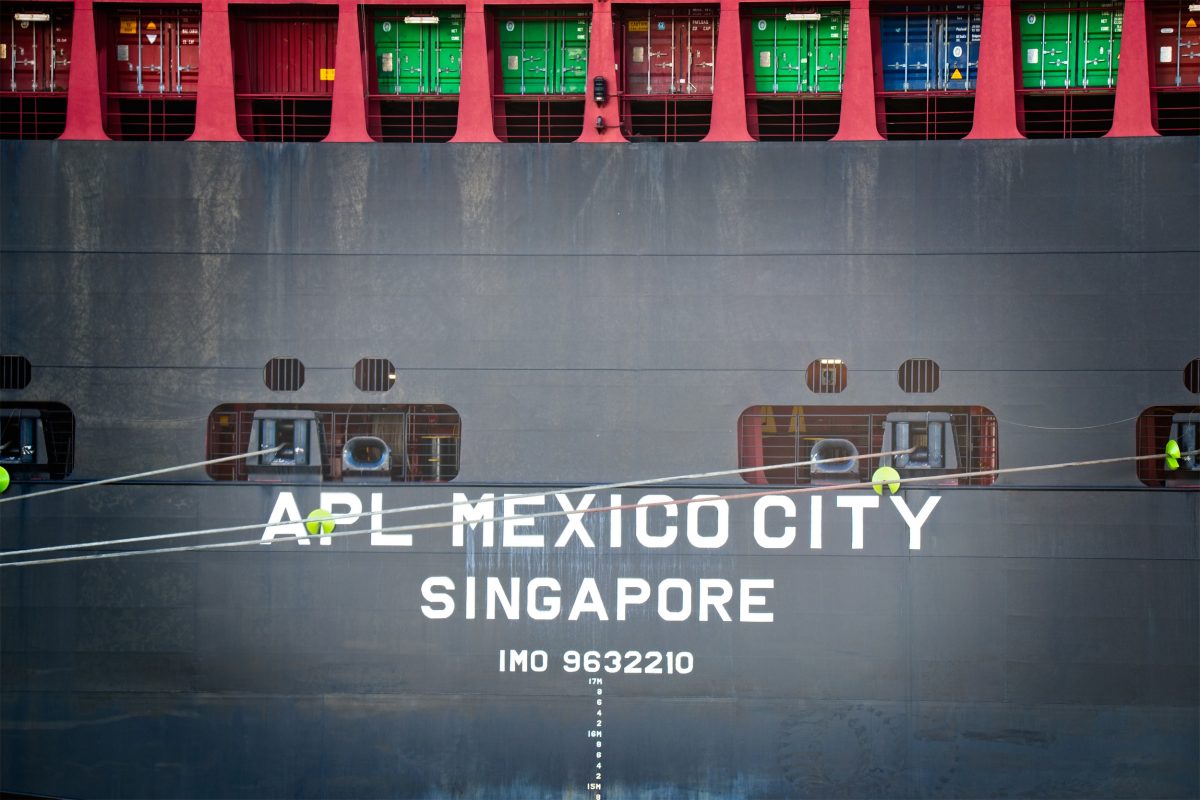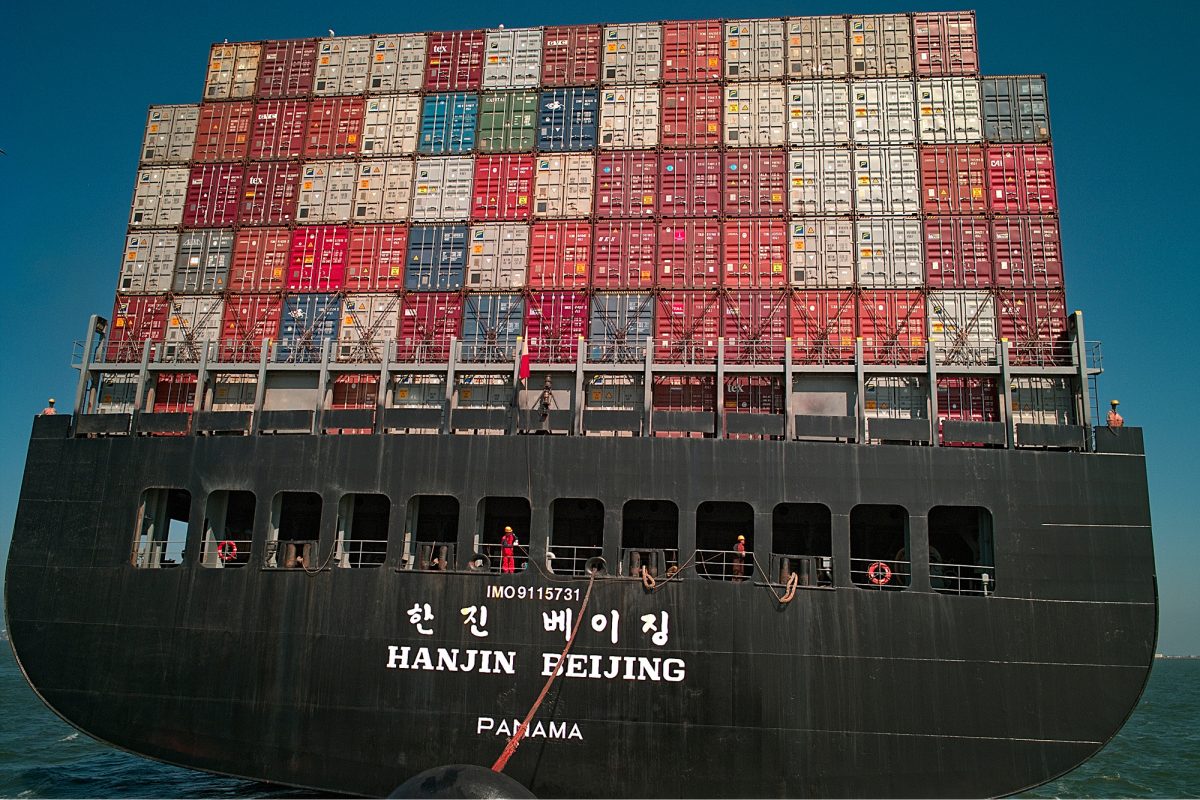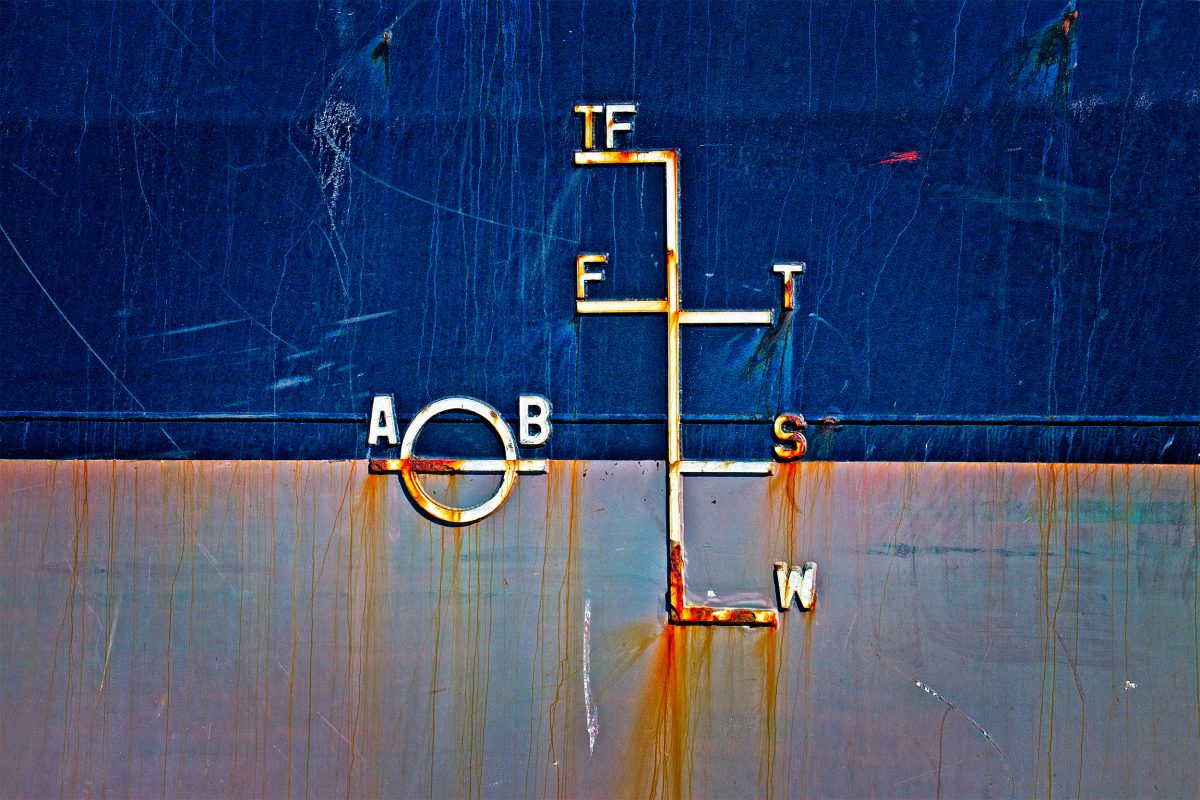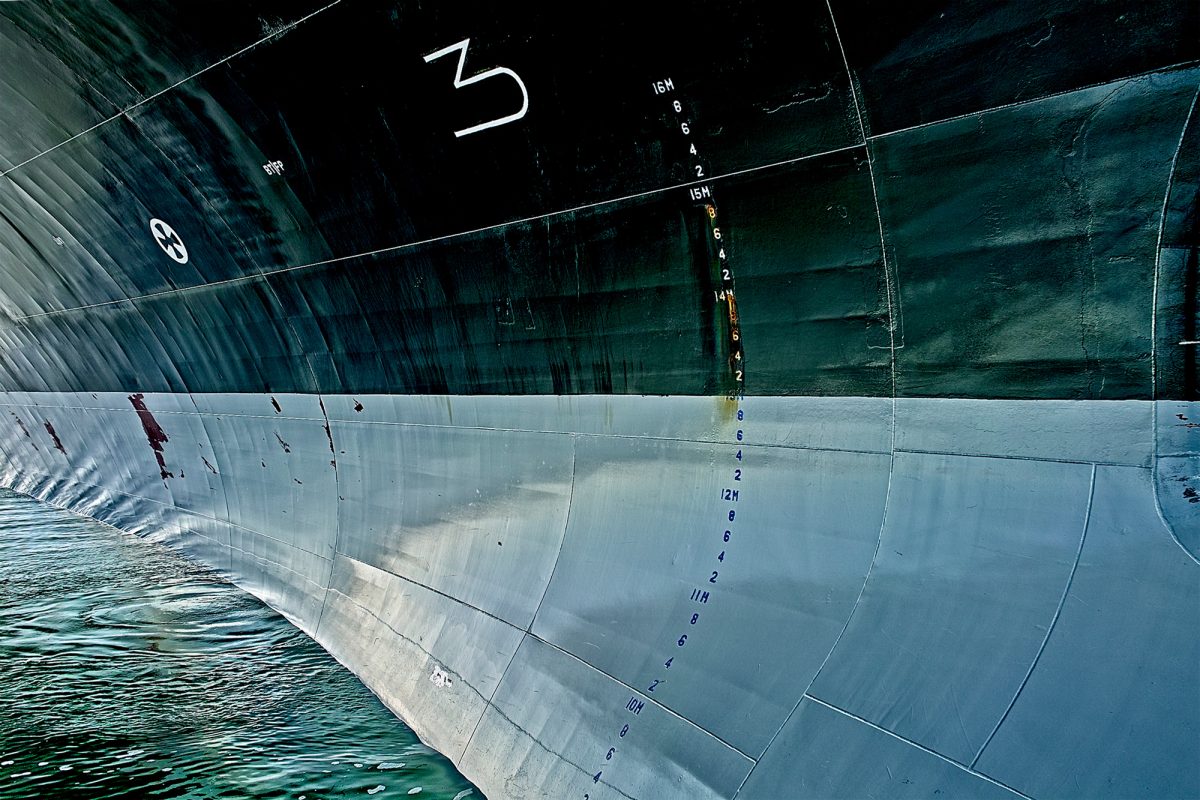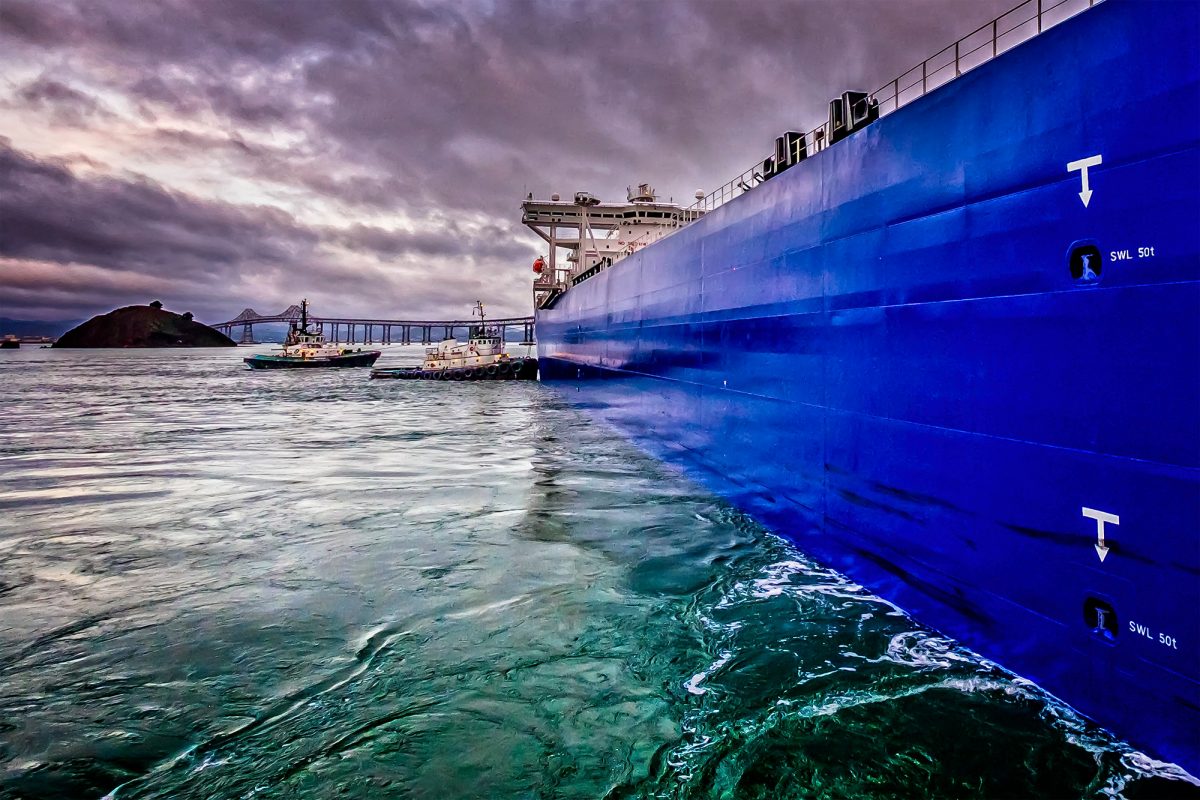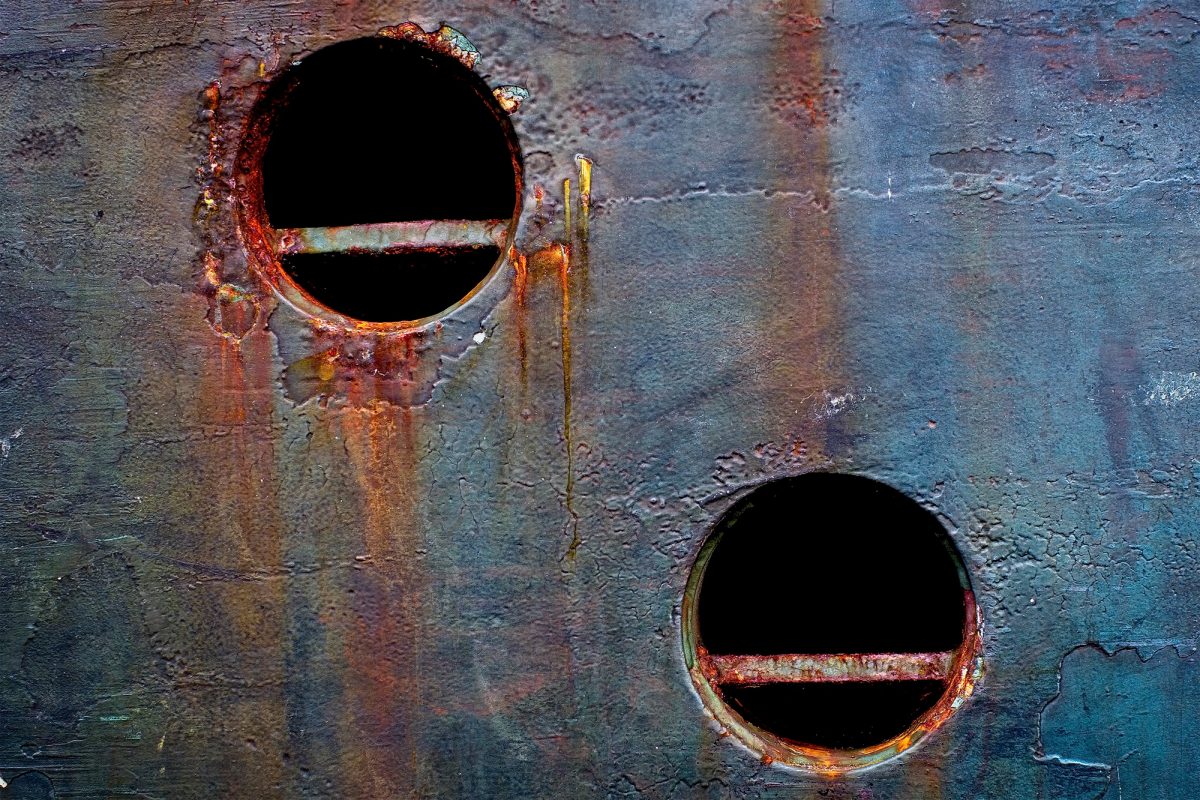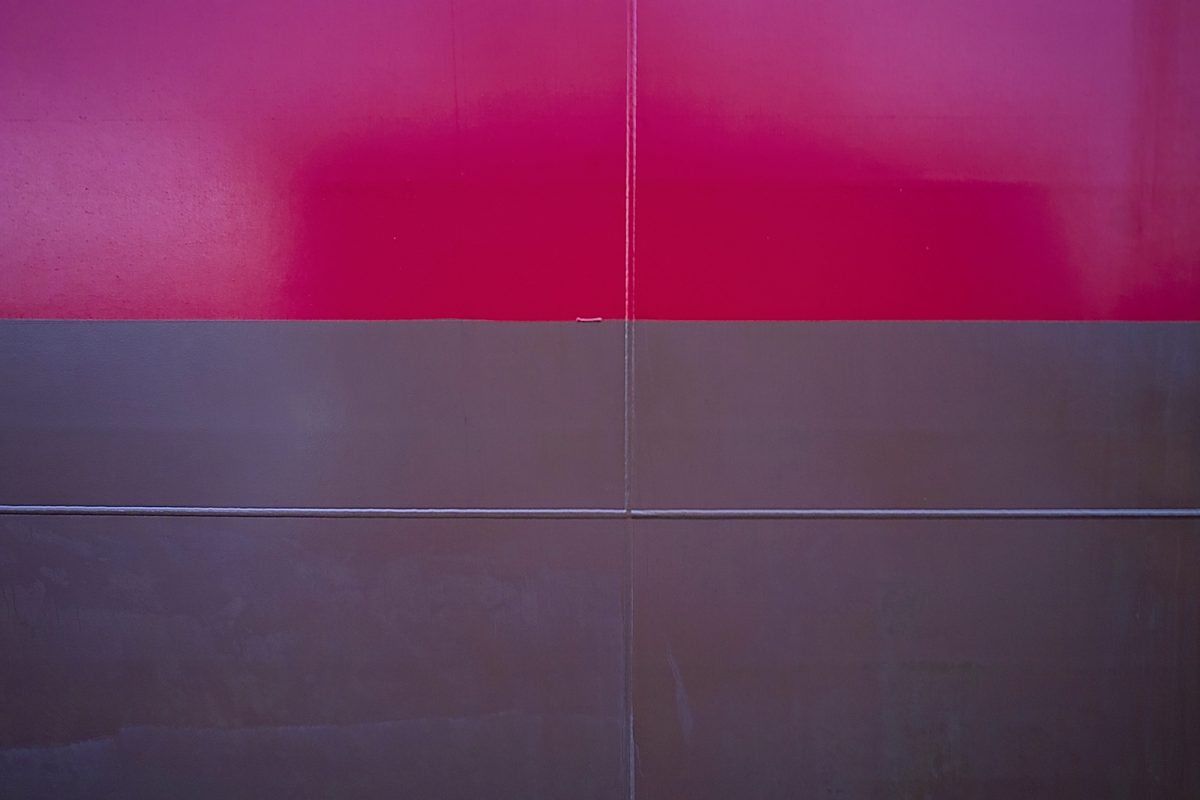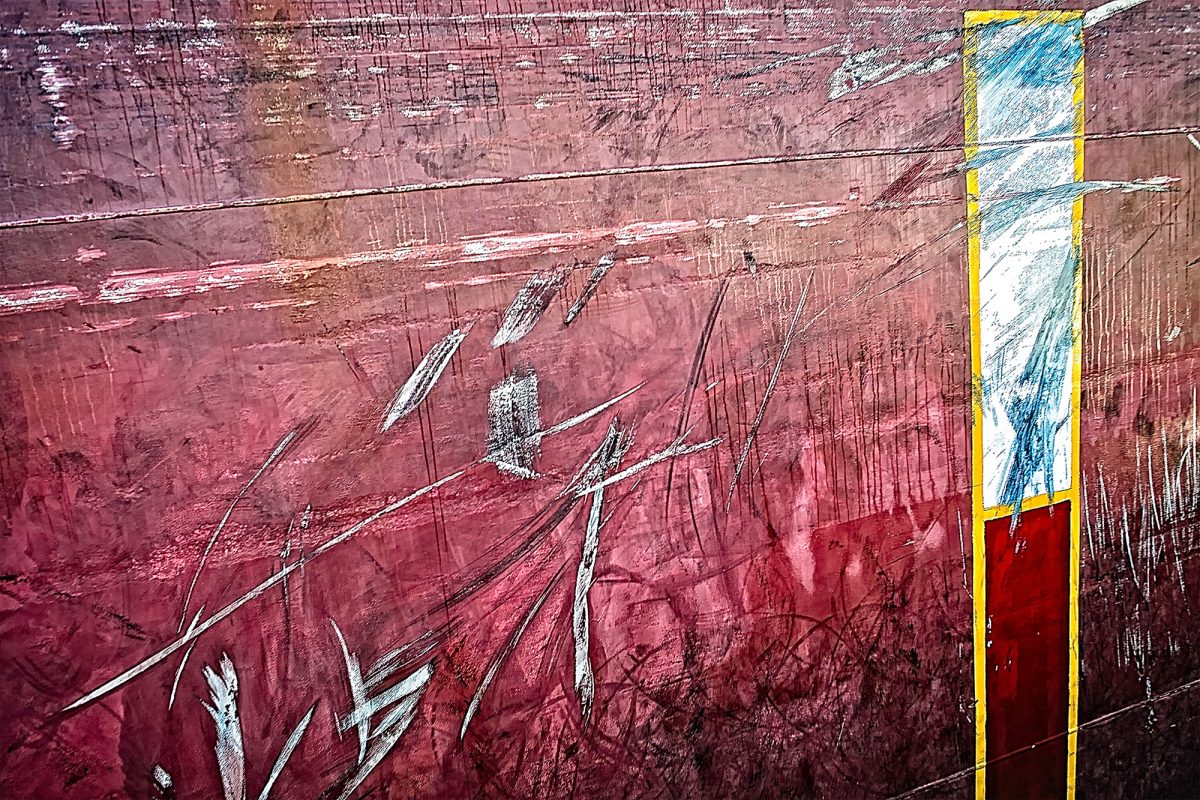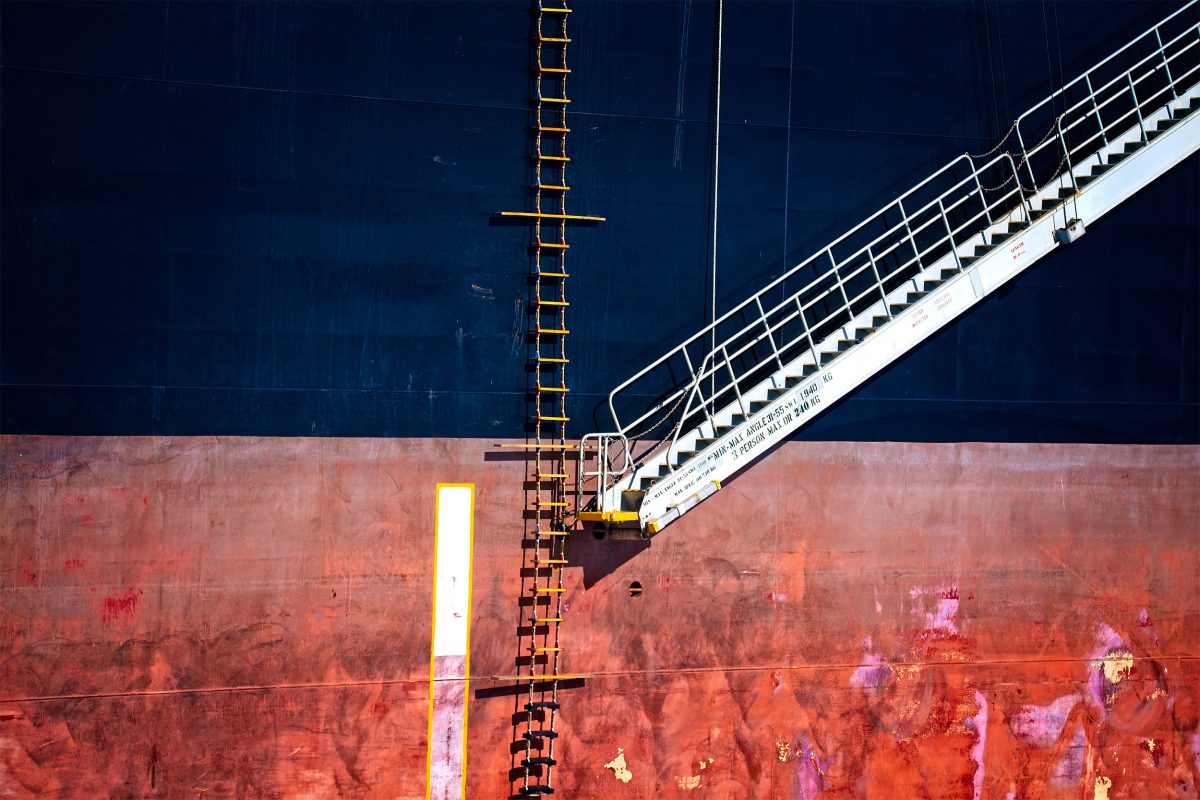The Secret Language of Ships
Signs and symbols on the sides of ships tell stories about an industry few outsiders understand.
Article body copy
Approaching the container ship in San Francisco Bay, the tugboat looks like a pit bull puppy chasing an eighteen-wheeler. When the vessels are an arm’s length apart, the ship’s mate throws down a line. Now leashed to the ship, the tug can push and pull it around the bay. Big ships can’t easily slow down or maneuver by themselves—they’re meant for going in a straight line.
Tugboat crews routinely encounter what few of us will ever see. They easily read a vessel’s size, shape, function, and features, while deciphering at a glance the mysterious numbers, letters, and symbols on a ship’s hull. To non-mariners, the markings look like hieroglyphs. For those in the know, they speak volumes about a particular ship and also about the shipping industry.
Oceangoing vessels carry over 80 percent of the world’s trade, with more than 90,000 merchant ships plying international waters. Tankers, bulk carriers, and container ships—the largest things on Earth that move—are by far the most important modes of transportation of our time. They convey billions of tonnes of goods every year, bringing us everything from cars to crude oil to containers jammed with fidget spinners.
Those who work in ports or on the water have a good view of the proceedings; tugs may have the best view of all. These photos get you closer to ships than most people will ever be.
“The sides of ships have their own sort of beauty,” says photographer David Webster Smith, who is also a San Francisco tugboat engineer. “As soon as I can, I get my camera out.”
Most ships have clues to their identity emblazoned on their stern, often in the same order: owner, name, port (or “flag”), and International Maritime Organization (IMO) number. American President Lines (APL) owns this ship, christened the Mexico City, and it sails under the flag of Singapore.
The owner, name, and flag may change over a ship’s lifespan, but the IMO number stays the same as mandated by an international maritime treaty. Like vehicle identification numbers, IMOs help thwart fraud. Do a web search on an IMO number and the ship’s full history pops up.
Curious about those yellow-green, fortune-cookie-shaped objects along the lines? They’re anti-rat devices, foiling rodent attempts to scrabble from dock to line to ship.
Why would a ship owned by a South Korean company (Hanjin) list its port as Panama?
More than 70 percent of the world’s commercial ships sail under what’s called a “flag of convenience.” This means that the ship is registered in a foreign country and sails under that country’s flag, usually to reduce operating costs, sidestep taxes, or avoid the stricter safety standards of the owner’s country.
By far the most popular flag of convenience is Panama, with Liberia and the Marshall Islands fast gaining ground. For these countries, the fees companies pay to fly their flags are a significant source of revenue.
There’s another thing about this ship worth mentioning. See the crew members up on deck, at the far left and right of the photo? They’re actually dummies dressed as mariners, meant to fool pirates into thinking someone is always on watch.
These marks, called load lines, show the maximum load a ship can carry.
Load lines owe much to a British member of Parliament named Samuel Plimsoll. Worried about the loss of ships and crew members due to overloading, he sponsored a bill in 1876 that made it mandatory to have marks on both sides of a ship. If a ship is overloaded, the marks disappear underwater. The original “Plimsoll line” was a circle with a horizontal line through it. The symbol spread around the world; additional marks were added over the years.
The letters on either side of the circle stand for the ship’s registration authority. AB is the American Bureau of Shipping, one of 12 members of the International Association of Classification Societies, which sets and maintains safety standards for more than 90 percent of the world’s cargo ships.
The marks and letters to the right of the circle indicate maximum loads under different climatic conditions. Salt water is denser than fresh, cold water denser than warm. Since water density affects ship buoyancy, different conditions call for different load lines.
W marks the maximum load in winter temperate seawater, S in summer temperate seawater, T in tropical seawater, F in fresh water, and TF in tropical fresh water, like that of the Amazon River.
This ship is equipped with what’s called a bulbous bow, a protrusion low on the bow. Contrary to its ungainly appearance, the bulb actually reduces drag, increasing speed and fuel efficiency.
The white symbol that looks like the numeral five without the top line alerts tugboats to the presence of the bulb, which under certain conditions may be entirely underwater. Tugs need to be aware of the protuberance to avoid running it over as they maneuver around the ship, possibly damaging both the bulb and the tug.
The white circle with an X inside signals the presence of a bow thruster, a propulsion device that helps the boat maneuver sideways, a boon for getting on and off docks.
The numbers arranged in a vertical line—called draft marks—measure the distance between the bottom of the hull (the keel) and the waterline. If the water comes up to the 10-meter line, for example, that means 10 meters of the ship is underwater.
Where the water hits the draft lines tells sailors if the ship is overloaded, and—when compared to the reading on the opposite side of the boat—if it’s listing to one side.
To the left of the draft lines are different versions of the bulbous bow and bow thruster symbols. BT|FP tells you the position of the bow thruster: between the ballast tank (BT) and the forepeak (FP), the forwardmost part of the ship. It’s important for a tugboat operator to know the location of the bow thruster, as it creates turbulence that the tug would rather avoid.
Two tugboats approach an oil tanker near the Richmond-San Rafael Bridge. This photo is taken from a third tug that’s moving in on the ship, guided by white arrows pointing to “chocks” that house small but strong posts called “bitts.” The tug fastens lines to these bitts.
SWL 50t means that the safe working load for each bitt is 50 tonnes. Once the tug has fastened a line to the bitt, it will exert no more than 50 tonnes of pulling pressure as it helps the ship brake or negotiate docking.
Are these bird cubbies, rusting in the sea air? Not quite. The cavities are, however, known as pigeonholes. They’re part of an in-hull ladder that allows mariners to climb up the side of a barge. Unlike cargo ships, flat-bottom barges are not self-propelled. They’re usually towed or pushed by tugboats, though in the early days they were hauled up rivers and canals by horses, mules, or donkeys on an adjacent towpath. Though barges are often unstaffed, they occasionally must be boarded, for instance when a line needs to be thrown down to a dockworker. Pigeonholes give the boarders a leg up.
A ship’s paint job isn’t primarily about aesthetics or branding. When you see this two-toned effect, the paint closer to the waterline is often of a different chemical composition, one that holds up better to immersion. Even more than preventing corrosion, a hull coating that may be underwater has to guard against the slime, algae, and barnacles that cling fast to a friendly hull.
What’s so bad about shellfish and microorganisms hitching a ride? The crusting of barnacles, mussels, and bacteria—called biofouling—creates drag, slowing ships and upping their fuel intake by as much as 40 percent. Foreign species can also invade ecosystems and outcompete native species for food and space. To remove the hitchhikers, the ship goes into dry dock for scraping or power washing.
Enter preventive measures, like antifouling paint. Early iterations contained copper and even arsenic, which effectively poisoned the organisms but also the water. Modern antifouling coatings are more eco-friendly, and there are always new systems being floated, such as creating a hull surface that mimics shark skin, since, unlike some whales, sharks don’t tend to harbor barnacles.
The white rectangle edged in yellow—a pilot boarding mark—tells the maritime pilot where to board the ship. Maritime pilots (also called harbor or bar pilots) are experts on the navigational hazards of their home harbor and crucial characters in the drama of maritime life.
The pilot catches a ride out to the ship on a boat about the size of a tug, scrambles up a ladder hanging off the clifflike side of the ship, and takes over for the captain just before the ship comes into port. The rope ladder may not yet be deployed when the pilot boat approaches a ship, so the boarding mark is an important guide.
The white marks on the red are battle scars, reminders of scuffles with docks, other vessels (mostly tugs), and the sides of canals.
A maritime pilot would board this ship using the two ladders pictured. First, he or she ascends the rope ladder, sometimes called a Jacob’s ladder, alluding to the biblical Jacob, who famously dreamed of a ladder connecting heaven and Earth. Partway up, the pilot sidesteps onto the relative security of the diagonal gangplank, called an accommodation ladder.
Sometimes the pilot makes do with just the rope ladder. According to IMO regulations, if the distance from water level to deck (which changes according to ship load and sea conditions) is more than nine meters, the ship must deploy an accommodation ladder in addition to the rope ladder. Nine meters or more is a long climb on a rope ladder, especially under difficult sea conditions.
Boarding and disembarking are probably the most dangerous parts of the job. Getting off the ship, pilots may let go of the ladder and use what’s called a manrope to help them onto the deck of the pilot boat. That way they’re less likely to be crushed between the pilot boat and ship.


